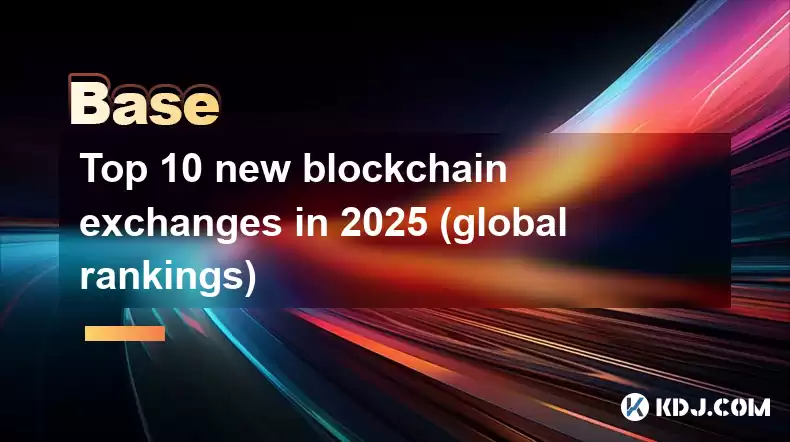-
 Bitcoin
Bitcoin $114700
-3.36% -
 Ethereum
Ethereum $3619
-6.51% -
 XRP
XRP $2.926
-7.66% -
 Tether USDt
Tether USDt $0.9998
-0.02% -
 BNB
BNB $768.6
-4.90% -
 Solana
Solana $168.2
-7.52% -
 USDC
USDC $0.9999
0.00% -
 Dogecoin
Dogecoin $0.2045
-9.02% -
 TRON
TRON $0.3243
-0.27% -
 Cardano
Cardano $0.7208
-8.45% -
 Hyperliquid
Hyperliquid $39.74
-9.17% -
 Stellar
Stellar $0.3882
-8.79% -
 Sui
Sui $3.481
-11.93% -
 Chainlink
Chainlink $16.52
-9.04% -
 Bitcoin Cash
Bitcoin Cash $556.7
-4.79% -
 Hedera
Hedera $0.2444
-11.40% -
 Avalanche
Avalanche $21.96
-8.51% -
 Ethena USDe
Ethena USDe $1.001
-0.02% -
 UNUS SED LEO
UNUS SED LEO $8.950
0.15% -
 Toncoin
Toncoin $3.425
-2.33% -
 Litecoin
Litecoin $104.4
-5.94% -
 Shiba Inu
Shiba Inu $0.00001212
-7.49% -
 Polkadot
Polkadot $3.630
-6.98% -
 Uniswap
Uniswap $9.165
-10.12% -
 Monero
Monero $306.8
-3.10% -
 Dai
Dai $0.9999
-0.01% -
 Bitget Token
Bitget Token $4.360
-3.43% -
 Pepe
Pepe $0.00001049
-9.59% -
 Cronos
Cronos $0.1352
-8.67% -
 Aave
Aave $256.5
-8.03%
Top 10 new blockchain exchanges in 2025 (global rankings)
2025年全球十大区块链交易所中,币安以日均1000亿美元交易量领先,支持600种加密货币,适用于高频和多资产投资者。
Apr 26, 2025 at 12:21 pm

2025年全球十大区块链交易所综合排名
1. 币安(Binance)
- 核心优势:全球交易量领先(日均超过1000亿美元),支持超过600种加密货币,涵盖现货、期货、NFT及DeFi生态系统。
- 合规进展:已获得欧盟和新加坡的牌照,冷存储比例达到98%。
- 适用场景:适用于高频交易者和多资产投资者。
2. Gate.io
- 核心优势:支持1400多种小众代币,挂单手续费为0.1%,量化工具齐全。
- 创新功能:通过Startup板块挖掘潜力币,并配备实时风控系统。
- 适用人群:适合山寨币爱好者和量化交易者。
3. OKX(原OKEx)
- 核心优势:在衍生品交易市场占有35%的份额,支持125倍杠杆,隐私交易拦截率为98%。
- 技术创新:应用零知识证明技术及智能交易工具,主导亚洲市场。
- 适用人群:适用于合约交易者和高风险偏好用户。
4. Kraken
- 核心优势:12年无安全事故,通过ISO 27001认证,95%的资产采用冷存储。
- 合规性:通过欧盟MiCA认证,提供机构级托管服务。
- 用户群体:适合长线持有者和专业机构。
5. Bybit
- 核心优势:专注于衍生品交易,永续合约支持200倍杠杆,订单执行速度在行业中领先。
- 扩张策略:在阿联酋和巴西获得合规牌照,提供零手续费现货交易。
- 风险提示:高杠杆操作需谨慎。
6. 火币(Huobi Global)
- 核心优势:在亚洲现货交易量中排名前三,支持通过支付宝和微信进行出入金,费率低至0.08%。
- 生态布局:通过Heco 2.0链主导东南亚市场,山寨币流动性强。
- 挑战:监管调整可能影响其全球排名。
7. Coinbase
- 核心优势:作为美国合规标杆,托管资产超过3000亿美元,是纳斯达克上市企业。
- 用户定位:界面友好适合新手,提供“学习赚币”教程,吸引机构投资者。
- 局限:手续费较高,币种选择相对有限。
8. KuCoin(库币)
- 核心优势:覆盖1800多种币种,注册用户超过5000万,全球化社区活跃。
- 运营策略:通过IFO空投和社交挖矿,提供新手友好型奖励机制。
- 局限:部分新兴代币的流动性较低。
9. Bitfinex
- 核心优势:面向专业交易员,支持100倍杠杆,P2P融资规模在行业中领先。
- 技术优势:提供深度流动性和滑点控制,适合大额交易。
- 用户定位:适合机构及高阶交易者。
10. Gemini
- 核心优势:获得纽约州BitLicense监管背书,是稳定币GUSD的发行方,保险覆盖资产。
- 安全措施:采用多重签名冷存储,ETH 2.0质押服务完善。
- 适用场景:适合高净值用户和有合规需求的机构。
总结与趋势分析
- 合规化进程加快:主流交易所(如Coinbase、Kraken)均通过SEC、MiCA等认证,监管成为核心竞争力之一。
Disclaimer:info@kdj.com
The information provided is not trading advice. kdj.com does not assume any responsibility for any investments made based on the information provided in this article. Cryptocurrencies are highly volatile and it is highly recommended that you invest with caution after thorough research!
If you believe that the content used on this website infringes your copyright, please contact us immediately (info@kdj.com) and we will delete it promptly.
- Australia vs Lions: Unleashing Betting Offers and Free Bets for the Thrilling Finale
- 2025-08-01 16:30:11
- Bitcoin, Satoshi, and the Echoes of Ancient Wisdom in DeFi
- 2025-08-01 16:50:12
- ONDO Tokens: Could They Mint the Next Crypto Millionaires?
- 2025-08-01 16:30:11
- Satoshi, Meme Coins, and Substance: A New Era?
- 2025-08-01 16:50:12
- Decoding the Roar: Australia, the Lions, and the Betting Odds
- 2025-08-01 16:55:48
- Bitcoin Price Plummets Amid Trump Tariffs: A Market Sell-Off Deep Dive
- 2025-08-01 16:55:48
Related knowledge

What is the difference between CeFi and DeFi?
Jul 22,2025 at 12:28am
Understanding CeFi and DeFiIn the world of cryptocurrency, CeFi (Centralized Finance) and DeFi (Decentralized Finance) represent two distinct financia...

How to qualify for potential crypto airdrops?
Jul 23,2025 at 06:49am
Understanding What Crypto Airdrops AreCrypto airdrops refer to the distribution of free tokens or coins to a large number of wallet addresses, often u...

What is a crypto "airdrop farmer"?
Jul 24,2025 at 10:22pm
Understanding the Role of a Crypto 'Airdrop Farmer'A crypto 'airdrop farmer' refers to an individual who actively participates in cryptocurrency airdr...

What is the difference between a sidechain and a Layer 2?
Jul 20,2025 at 11:35pm
Understanding the Concept of SidechainsA sidechain is a separate blockchain that runs parallel to the main blockchain, typically the mainnet of a cryp...

What is the Inter-Blockchain Communication Protocol (IBC)?
Jul 19,2025 at 10:43am
Understanding the Inter-Blockchain Communication Protocol (IBC)The Inter-Blockchain Communication Protocol (IBC) is a cross-chain communication protoc...

How does sharding improve scalability?
Jul 20,2025 at 01:21am
Understanding Sharding in BlockchainSharding is a database partitioning technique that is increasingly being adopted in blockchain technology to enhan...

What is the difference between CeFi and DeFi?
Jul 22,2025 at 12:28am
Understanding CeFi and DeFiIn the world of cryptocurrency, CeFi (Centralized Finance) and DeFi (Decentralized Finance) represent two distinct financia...

How to qualify for potential crypto airdrops?
Jul 23,2025 at 06:49am
Understanding What Crypto Airdrops AreCrypto airdrops refer to the distribution of free tokens or coins to a large number of wallet addresses, often u...

What is a crypto "airdrop farmer"?
Jul 24,2025 at 10:22pm
Understanding the Role of a Crypto 'Airdrop Farmer'A crypto 'airdrop farmer' refers to an individual who actively participates in cryptocurrency airdr...

What is the difference between a sidechain and a Layer 2?
Jul 20,2025 at 11:35pm
Understanding the Concept of SidechainsA sidechain is a separate blockchain that runs parallel to the main blockchain, typically the mainnet of a cryp...

What is the Inter-Blockchain Communication Protocol (IBC)?
Jul 19,2025 at 10:43am
Understanding the Inter-Blockchain Communication Protocol (IBC)The Inter-Blockchain Communication Protocol (IBC) is a cross-chain communication protoc...

How does sharding improve scalability?
Jul 20,2025 at 01:21am
Understanding Sharding in BlockchainSharding is a database partitioning technique that is increasingly being adopted in blockchain technology to enhan...
See all articles

























































































